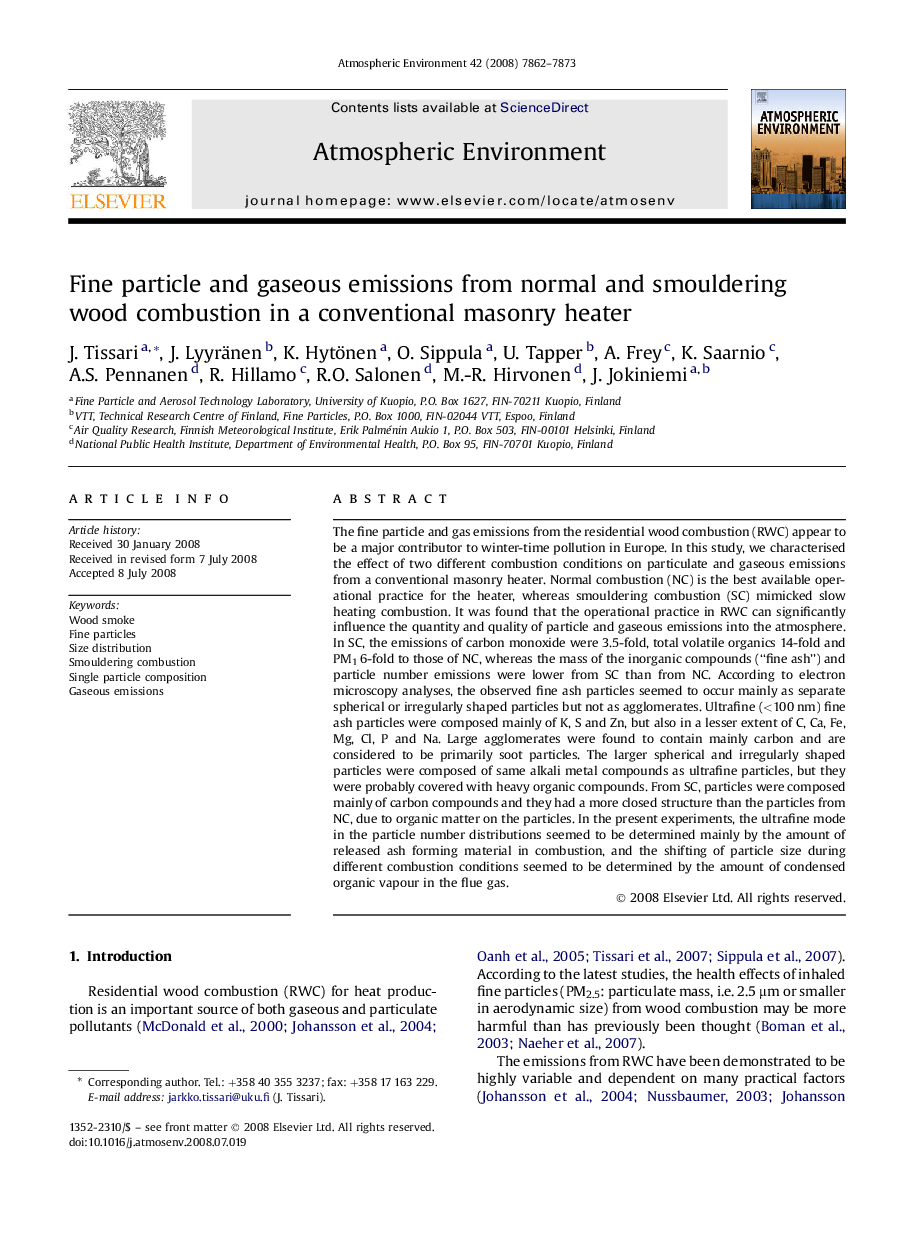| کد مقاله | کد نشریه | سال انتشار | مقاله انگلیسی | نسخه تمام متن |
|---|---|---|---|---|
| 4441494 | 1311110 | 2008 | 12 صفحه PDF | دانلود رایگان |

The fine particle and gas emissions from the residential wood combustion (RWC) appear to be a major contributor to winter-time pollution in Europe. In this study, we characterised the effect of two different combustion conditions on particulate and gaseous emissions from a conventional masonry heater. Normal combustion (NC) is the best available operational practice for the heater, whereas smouldering combustion (SC) mimicked slow heating combustion. It was found that the operational practice in RWC can significantly influence the quantity and quality of particle and gaseous emissions into the atmosphere. In SC, the emissions of carbon monoxide were 3.5-fold, total volatile organics 14-fold and PM1 6-fold to those of NC, whereas the mass of the inorganic compounds (“fine ash”) and particle number emissions were lower from SC than from NC. According to electron microscopy analyses, the observed fine ash particles seemed to occur mainly as separate spherical or irregularly shaped particles but not as agglomerates. Ultrafine (<100 nm) fine ash particles were composed mainly of K, S and Zn, but also in a lesser extent of C, Ca, Fe, Mg, Cl, P and Na. Large agglomerates were found to contain mainly carbon and are considered to be primarily soot particles. The larger spherical and irregularly shaped particles were composed of same alkali metal compounds as ultrafine particles, but they were probably covered with heavy organic compounds. From SC, particles were composed mainly of carbon compounds and they had a more closed structure than the particles from NC, due to organic matter on the particles. In the present experiments, the ultrafine mode in the particle number distributions seemed to be determined mainly by the amount of released ash forming material in combustion, and the shifting of particle size during different combustion conditions seemed to be determined by the amount of condensed organic vapour in the flue gas.
Journal: Atmospheric Environment - Volume 42, Issue 34, November 2008, Pages 7862–7873